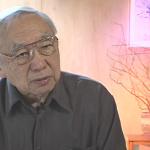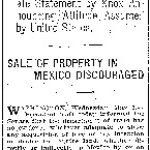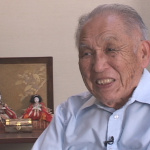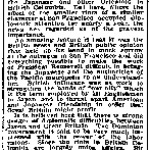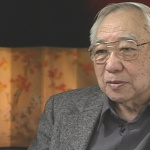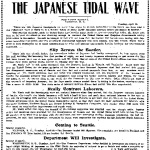V.S. McClatchy
| Name | Valentine Stuart "V. S." McClatchy |
|---|---|
| Born | 1857 |
| Died | 1938 |
Newspaper publisher, anti-Japanese activist. Prominent Central California newspaper publisher V.S. McClatchy (1857–1938) became the leading figure in the post-World War I anti-Japanese movement that culminated in the cessation of Japanese immigration through the Immigration Act of 1924 . Many of the arguments McClatchy marshaled against Japanese Americans in the 1920s were resurrected by those seeking their mass removal in the 1940s.
Valentine Stuart "V. S." McClatchy was born in 1857, the son of James McClatchy, the founding editor of the Daily (later Sacramento) Bee newspaper. James was an Irish immigrant who had journeyed to California during the California Gold Rush. V. S. graduated from Santa Clara College in 1877. Upon James' passing in 1883, V. S. and his brother, Charles Kenny (known as "C. K.") assumed joint ownership of the newspaper, with C. K. serving as editor and V. S. as publisher. The brothers jointly operated the paper for nearly forty years, both becoming prominent citizens of the central valley area. A large landowner in the Sutter Basin area, McClatchy served as the president of the state reclamation board from its formation in 1911 to 1917. During that time, he was a key figure in green lighting massive reclamation projects in the Sacramento Valley, which opened up many acres of rich agricultural lands in the valley. He also served for a time as the president of Associated Press.
Largely retiring from journalism in 1919, his brother bought out V. S. for sole control of the Bee and of the newly formed sister paper the Fresno Bee in 1923. V. S. spent much of his newfound time as perhaps the leading figure in the anti-Japanese movement that began anew after World War I. As historian Chris Stewart Nielson writes, "his wealth, commitment to the cause, and his work ethic made him an ideal leader for the anti-Asian movement." [1]
As early as 1915, he wrote of Japan as a military threat to the U.S., referring to it as the "Germany of Asia." As part of arguing for American preparedness against Japan, he viewed Japanese immigrants and their descendents as an internal enemy that had to be eliminated. Beginning in 1919, he financed the publication of a string of anti-Japanese pamphlets and also used his family newspapers to editorialize against Japanese Americans. He was one of the founders of the Japanese Exclusion League of California, formed on September 2, 1920. Historian Roger Daniels cites him as "the real power in the organization" who "devoted full time to what he felt was a holy cause." [2]
His core theme was the idea of Japanese immigrants as a "peaceful invasion force" controlled by Japan and sent for purpose of "colonizing" California. The only way to stop this, he argued, was to end all immigration from Japan. He also pushed for toughening the alien land laws and for changing the 14th Amendment so that those born to parents "ineligible to citizenship" would not automatically become citizens. In making his argument for exclusion, he railed against picture brides , manipulated statistics to argue that the high birthrate of Japanese immigrants would result in two million Japanese in California by 1943 and 100 million by 2043, and cited California as the "bulwark" for the rest of the country.
With associates James D. Phelan and Ulysses S. Webb—the former a former U.S. Senator from California and the latter a former state attorney general—McClatchy went to Washington to lobby for exclusion in 1924. "They come here specifically and professedly for the purpose of colonizing and establishing here permanently the proud Yamato race," he told the Senate Committee on Immigration in words that echo those that would be spoken by advocates of forced removal from the West Coast eighteen years later. "They never cease being Japanese." [3]
McClatchy and his associates succeeded in their quest for exclusion with the Immigration Act of 1924. He rebranded the Japanese Exclusion League in 1925, forming the California Joint Immigration Committee , which next targeted Filipino immigrants as the "third wave" of invaders after the Chinese and Japanese. In 1937, he pushed for legislation aimed at Nisei in Japan that would strip their citizenship and prevent the return to the U.S. of those who could not justify having been out of the country for more than a year. [4] He died of a heart ailment on May 15, 1938. [5] After his death, his son H. J. continued the family tradition, and argued for mass removal and incarceration of Japanese Americans in 1942.
For More Information
Daniels, Roger. The Politics of Prejudice: The Anti-Japanese Movement in California and the Struggle for Japanese Exclusion . 2nd ed. Berkeley: University of California Press, 1977.
Kelley, Robert. "Taming the Sacramento: Hamiltonianism in Action." Pacific Historical Review 34 (Feb. 1965): 21–49.
The McClatchy Company. https://www.mcclatchy.com/about/history . [McClatchy newspapers' official history.]
McClatchy, V. S. Four Anti-Japanese Pamphlets . New York: Arno Press, 1978. [Reprint of four of McClatchy's pamphlets published between 1919 and 1925.]
Nielson, Chris Stewart. "Whiteness Imperiled: Anti-Asian Sentiment in California, 1900–1930." Ph.D. dissertation, University of California, Riverside, 2007.
Footnotes
- ↑ Chris Stewart Nielson, "Whiteness Imperiled: Anti-Asian Sentiment in California, 1900–1930" (Ph.D. dissertation, University of California, Riverside, 2007), 185.
- ↑ Roger Daniels, The Politics of Prejudice: The Anti-Japanese Movement in California and the Struggle for Japanese Exclusion , 2nd ed., (Berkeley: University of California Press, 1977), 91.
- ↑ Daniels, Politics of Prejudice , 98.
- ↑ David Yoo, Growing Up Nisei: Race, Generation, and Culture among Japanese Americans of California, 1924-49 (Urbana: University of Illinois Press, 2000), 76.
- ↑ "Death Takes V.S. McClatchy," Lodi News-Sentinel , May 16, 1938, accessed on May 6, 2012http://news.google.com/newspapers?nid=2245&dat=19380516&id=yMczAAAAIBAJ&sjid=se4HAAAAIBAJ&pg=2451,518915.
Last updated April 17, 2024, 5:14 a.m..

